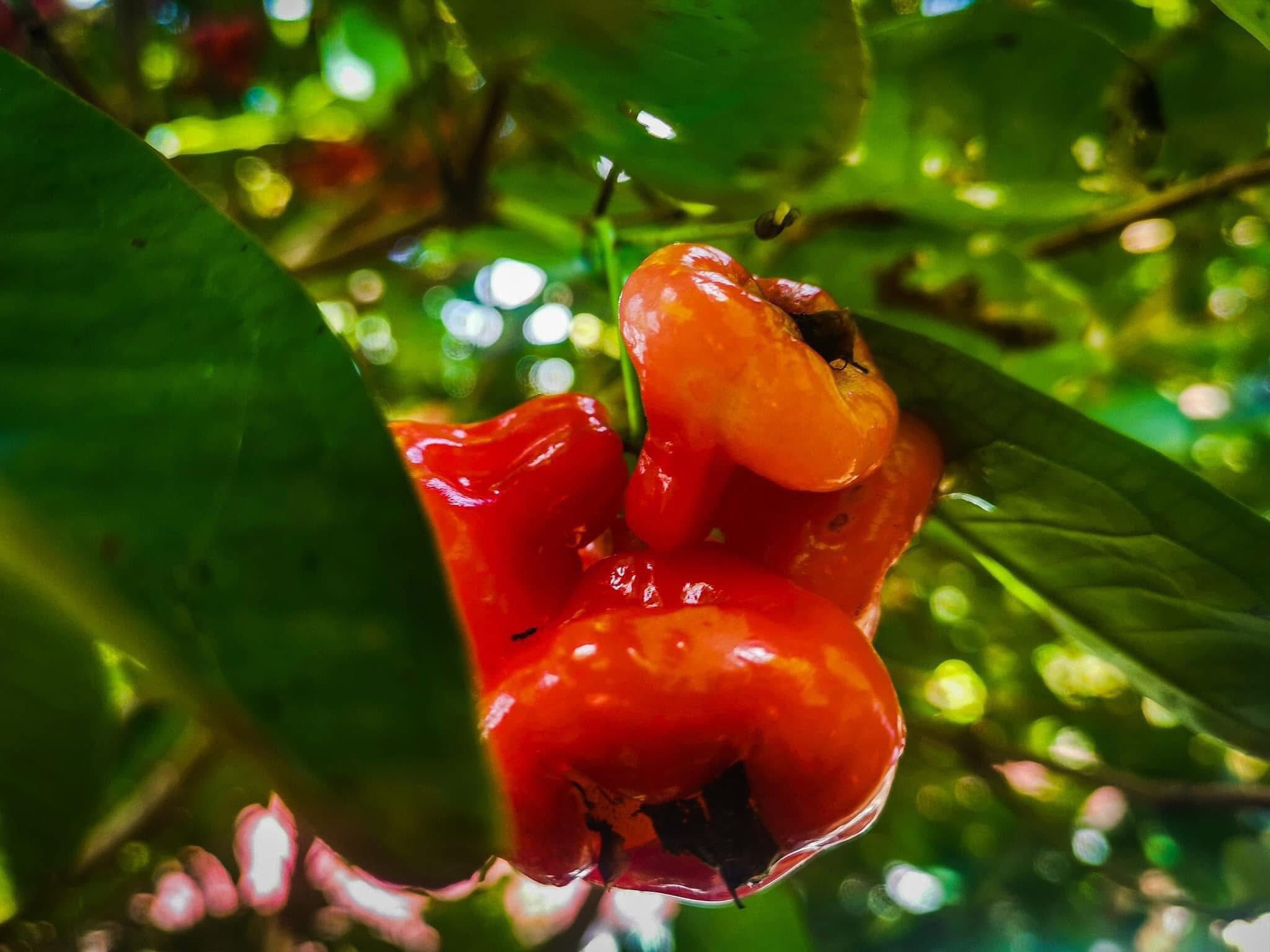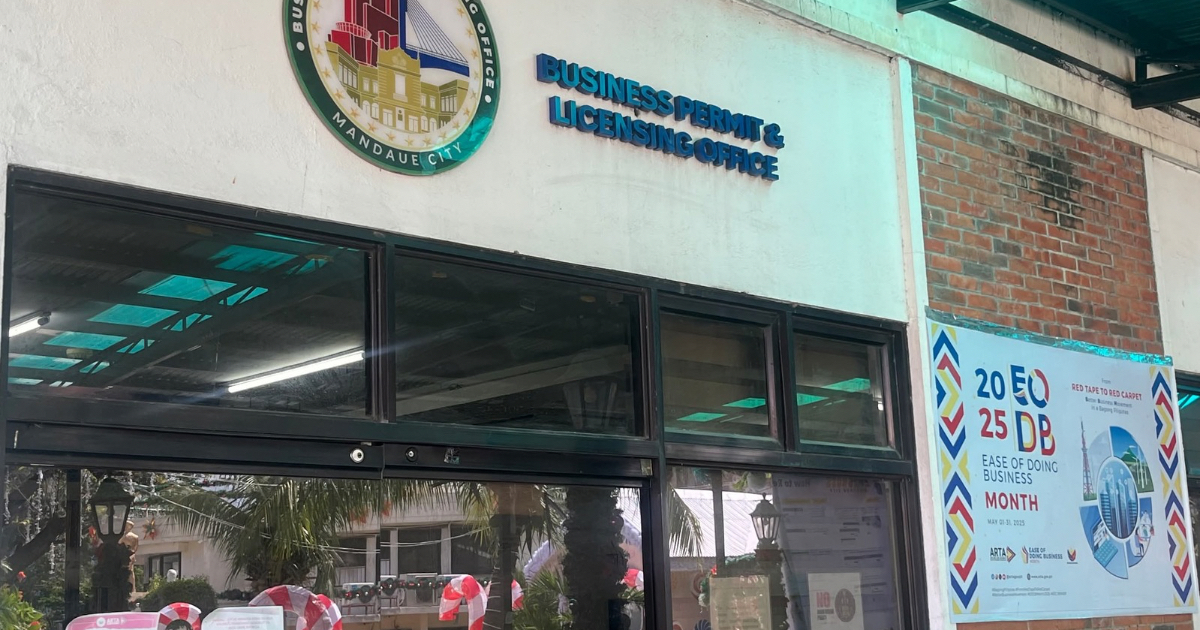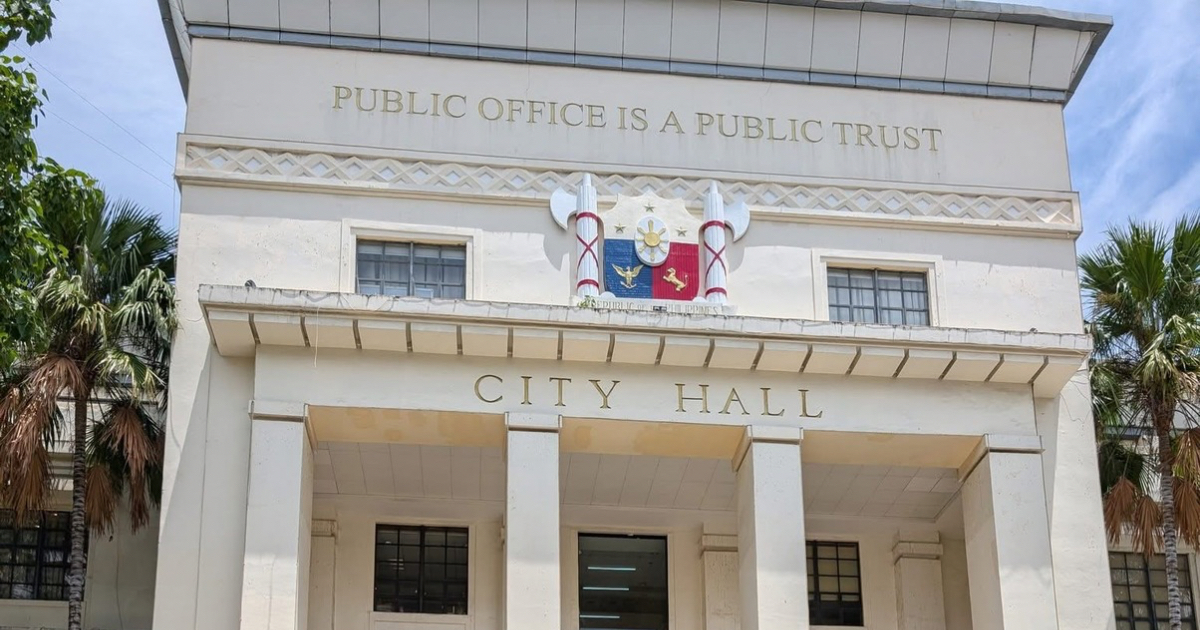It’s that time of the year again—tingbunga na sa tambis! The branches are heavy with fruit, and the air smells faintly of crisp, watery sweetness. But what exactly is this fruit we’ve all grown up with in the Visayas and parts of Mindanao?
Meet the Tambis (Watery Rose Apple)
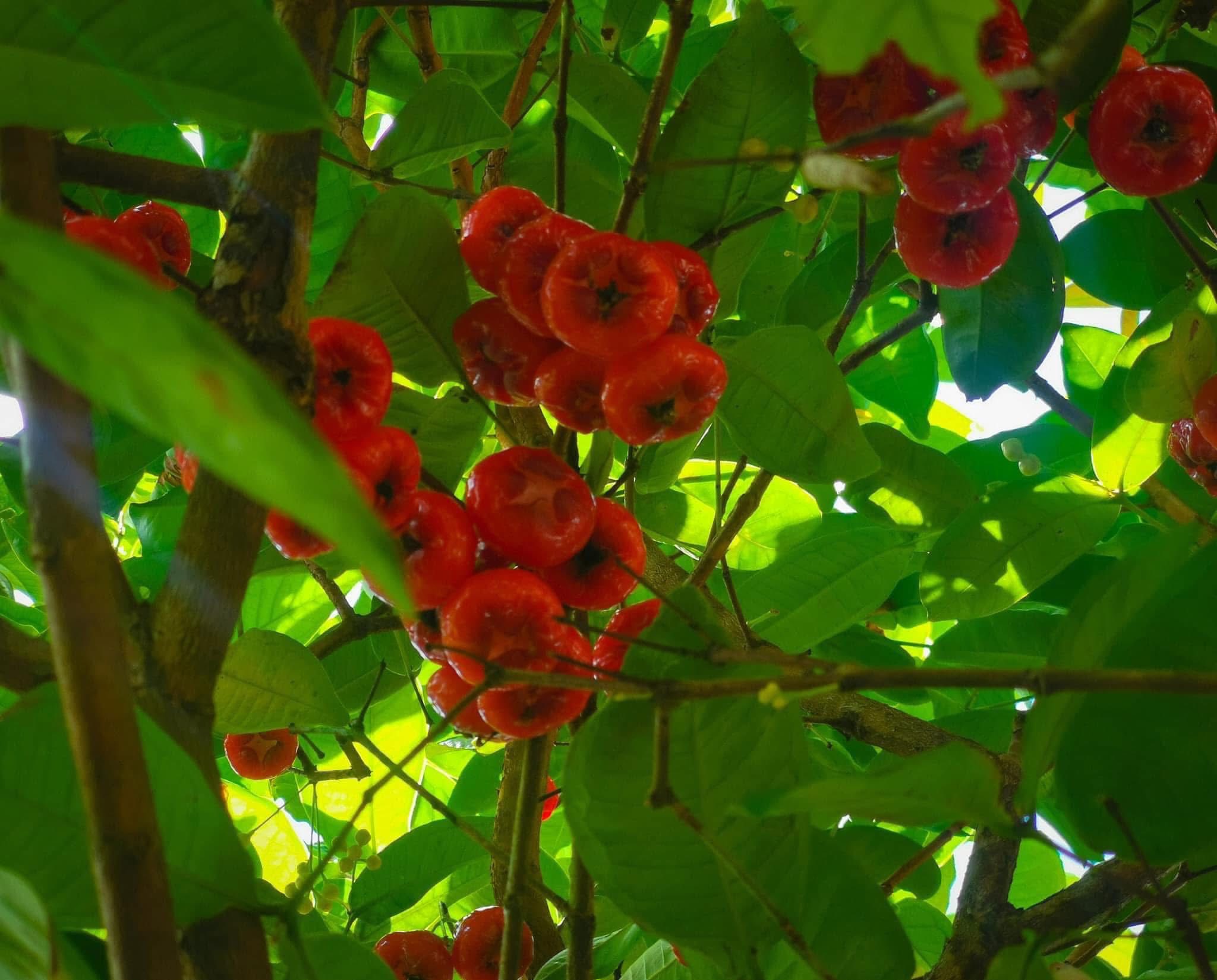
Known locally as Tambis in Cebuano and Waray, this fruit is called the Watery Rose Apple in English and goes by the scientific name Syzygium aqueum. It belongs to the same family as the Java apple (makopa) but is smaller, lighter in color, and has a higher water content—making it a perfect thirst-quencher straight from nature.
With its mildly sweet flavor and crisp texture, tambis is a staple in Filipino childhoods—climbed from trees, picked straight from backyard branches, and often enjoyed with a pinch of salt or vinegar.
Health Benefits of Tambis
Beyond its nostalgic value and satisfying crunch, tambis also offers several health benefits:
Hydrating Properties
As its English name suggests, the Watery Rose Apple is rich in water content, making it great for hydration especially in hot, tropical weather.
Rich in Vitamin C
Tambis contains Vitamin C, which helps boost immunity, fight oxidative stress, and improve skin health.
Low in Calories
This fruit is naturally low in sugar and calories, making it a good snack option for those watching their weight or sugar intake.
Supports Heart Health
Some studies suggest that the Syzygium genus has antioxidant and anti-inflammatory properties that may benefit cardiovascular health.
A Taste of Home
For many Filipinos especially in the Visayas tambis is more than just a fruit. It’s a symbol of simple joys, of summer afternoons, and of homegrown abundance. It’s the kind of snack you didn’t have to buy, just climb a tree for. And it’s still loved today just as it was generations ago.
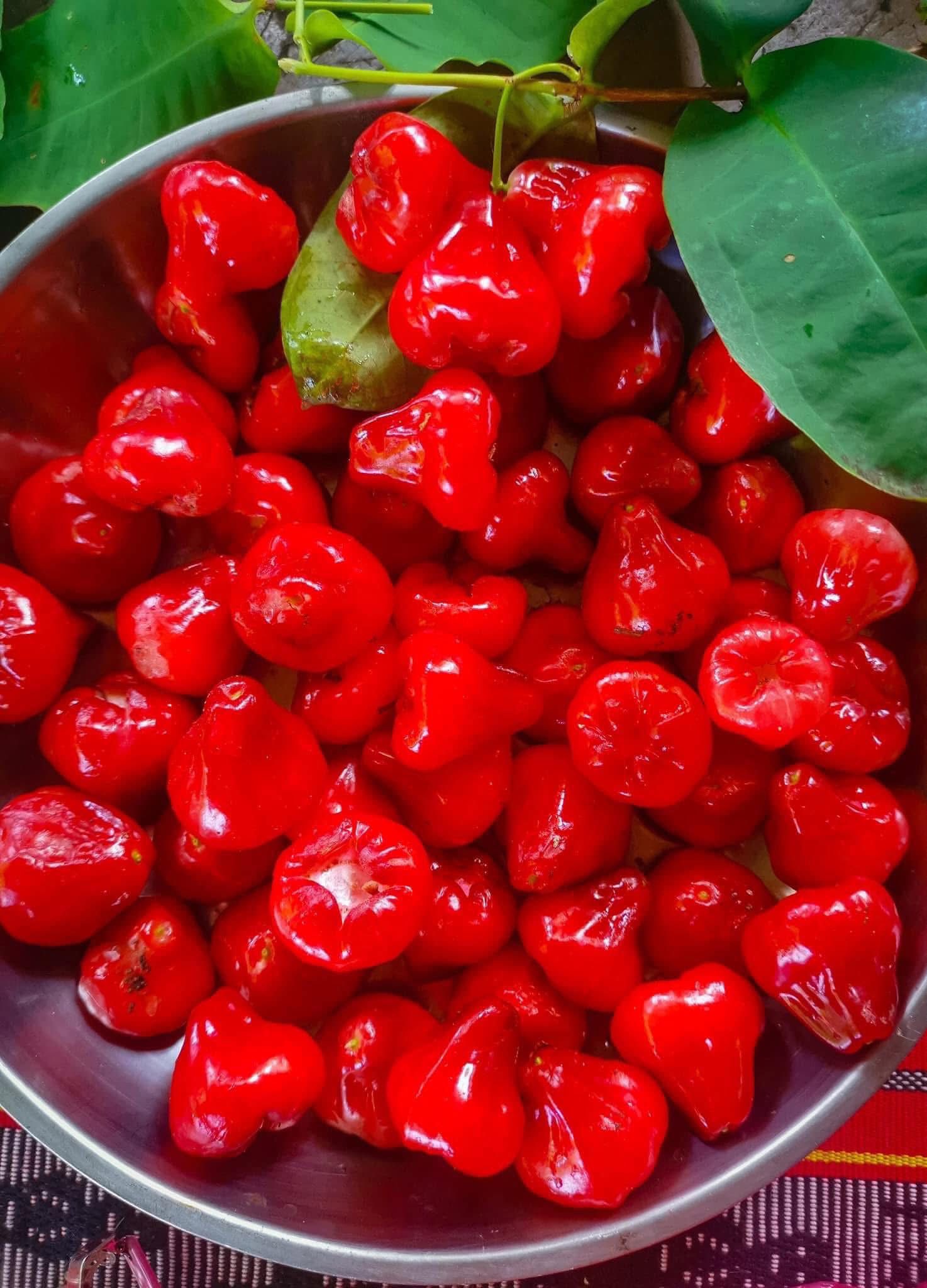
Quick Tips: How to Enjoy Tambis
- Eat it fresh and raw for the best crunch.
- Pair it with rock salt or suka for a tangy twist.
- Add it to salads for texture and moisture.
- Try it chilled for a more refreshing treat!
Whether you’re enjoying it under the shade of a tree or discovering it at a local market, tambis remains a uniquely Filipino treasure worth celebrating.
So, tingbunga na — kinsay kusog mo kaon ani?
Photos: Tetel Barredz


